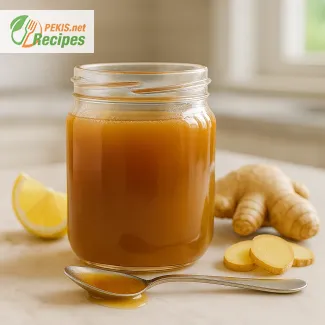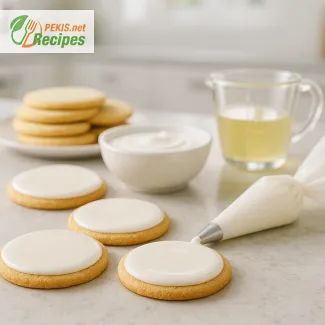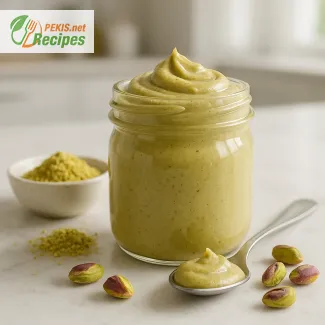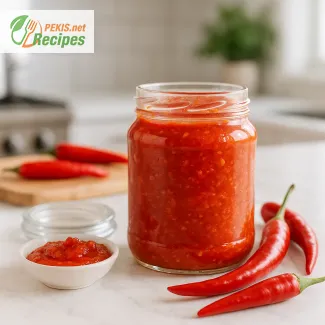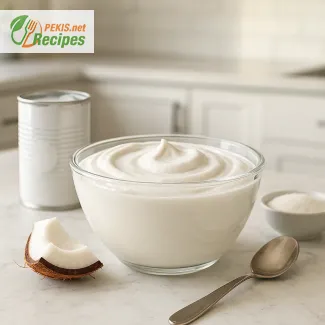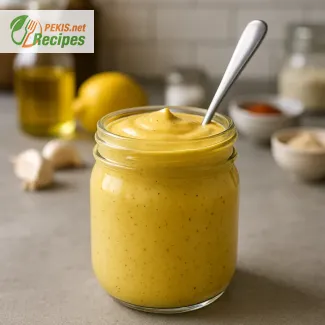
Discover the Secret Behind the Perfect Yum Sauce
A versatile creamy condiment for bowls, wraps, and more
Few condiments capture the perfect balance of creamy texture, zesty tang, and umami richness quite like yum sauce. Originally made famous in Asian-fusion cuisine and plant-based meal bowls, this sauce has rapidly become a go-to favorite in kitchens around the world. Whether drizzled over grilled vegetables, spooned onto rice and quinoa bowls, or used as a dip for roasted potatoes and tofu, yum sauce delivers big flavor in just a few spoonfuls.
This recipe focuses on the essence of what makes yum sauce so popular: its simplicity, adaptability, and bold flavor profile. Unlike many commercial dressings, homemade versions can be tailored to individual taste preferences, whether that means dialing up the garlic, boosting the acidity, or adding a kick of heat. At its core, yum sauce is built around a creamy base—often mayonnaise, Greek yogurt, or a vegan alternative—combined with ingredients like garlic, lemon juice, mustard, and nutritional yeast for depth and complexity.
Why homemade yum sauce stands out
Store-bought sauces may offer convenience, but they often fall short in freshness and flavor. A homemade yum sauce is easy to prepare in under 10 minutes and can be stored for several days without losing its taste. Because you control the ingredients, it's also free from preservatives, additives, and excess sugar. This makes it ideal not just for healthy eating, but also for those with specific dietary needs or allergies.
Moreover, the richness of this sauce isn't just about fat—it’s about flavor layering. From the slight acidity of apple cider vinegar to the umami notes of tamari or soy sauce, each element plays a role in creating a perfectly balanced sauce. When emulsified together, the result is a thick, silky condiment that complements almost any dish, making it a reliable staple for everyday meals.
Key ingredients that bring it all together
What sets yum sauce apart from other creamy dressings is the inclusion of nutritional yeast—an ingredient beloved in vegan cuisine for its cheesy, savory notes. This, along with a splash of fresh lemon juice or vinegar and a hint of smoked paprika, gives the sauce its signature flavor. The base can vary: traditional recipes use mayonnaise, but newer plant-based versions might use blended cashews, tahini, or unsweetened plant yogurt.
For those who enjoy experimenting in the kitchen, yum sauce offers the perfect canvas. Add a pinch of cayenne pepper for heat, a spoonful of Dijon mustard for sharpness, or a clove of fresh garlic for boldness. It's easy to personalize while maintaining that unmistakable creamy-tangy balance.
Creative ways to use yum sauce
One of the most appealing qualities of yum sauce is its culinary versatility. It pairs effortlessly with a wide range of dishes and works equally well as a drizzle, dip, or dressing. Try it on:
- Grain bowls with brown rice, quinoa, or farro
- Roasted vegetable medleys, especially broccoli, carrots, and cauliflower
- Wraps and sandwiches with grilled tofu, tempeh, or chicken
- Crispy baked potatoes, sweet potato wedges, or fries
- Cold noodle salads with julienned vegetables and fresh herbs
For those on a plant-based diet, yum sauce provides a rich source of flavor without relying on dairy or meat-based products. But it’s equally appreciated by omnivores looking for something fresh and exciting to elevate their everyday meals.
Shelf life and storage tips
Once prepared, yum sauce should be stored in an airtight glass container in the refrigerator. Its natural acidity, thanks to ingredients like vinegar and lemon juice, helps preserve it for several days—typically up to 5 to 7 days. Because there are no artificial stabilizers, it’s best to give the jar a quick stir before each use to maintain its consistency.
For added convenience, you can portion it into small jars or containers for meal prep or lunchboxes. It’s also freezer-safe if made with a non-dairy base, although some texture changes may occur upon thawing.
Why yum sauce deserves a place in your kitchen
In a culinary world saturated with store-bought dressings and overly processed dips, yum sauce stands out as a flavor-forward, easy-to-make, and infinitely customizable option. It bridges the gap between comfort food and health-conscious cooking, offering an elevated taste experience with minimal effort. Whether you're preparing a hearty grain bowl, assembling a quick lunch wrap, or dipping freshly roasted vegetables, a spoonful of yum sauce can transform a simple meal into something crave-worthy.
- Add sunflower oil, water, apple cider vinegar, lemon juice, garlic, and maple syrup into a high-speed blender or food processor.
- Blend for 20–30 seconds until the mixture is emulsified and creamy.
- Add nutritional yeast, Dijon mustard, smoked paprika, sea salt, ground turmeric, and cayenne pepper.
- Blend again for another 30 seconds until fully combined and smooth.
- Taste and adjust seasoning if necessary—add more lemon juice for brightness or paprika for smokiness.
- Transfer to a clean airtight glass jar and refrigerate for at least 30 minutes to let flavors meld before serving.
- Stir before use. Keeps for up to 7 days in the refrigerator.
How to Customize and Perfect Your Homemade Yum Sauce
Tips, substitutions, and enhancements for a more flavorful experience
Crafting a homemade yum sauce allows for remarkable flexibility, giving you full control over flavor, texture, and nutritional content. While the base recipe delivers a satisfying balance of creamy, tangy, and savory elements, it can be improved or adapted in many ways to match different culinary preferences and dietary needs. Small ingredient swaps or additions can yield dramatic improvements, enhancing both taste and functionality.
How to boost flavor with simple ingredient upgrades
One of the easiest ways to elevate the taste of your yum sauce is by adjusting the acidity and umami balance. If you prefer a sharper, more vibrant profile, consider adding a touch more lemon juice or apple cider vinegar. For a richer mouthfeel and added umami, a teaspoon of white miso paste or a few drops of tamari can add depth without overpowering the original flavor.
For those who enjoy a spicy kick, try blending in Sriracha, chipotle powder, or even a roasted chili. These ingredients contribute not just heat, but also a smoky dimension that complements grilled vegetables and proteins. A dash of garlic powder or roasted garlic paste can also intensify the savory profile for those who want a stronger garlic presence.
Healthy alternatives to improve nutrition without sacrificing taste
Although the classic version of yum sauce includes sunflower oil and sometimes mayonnaise, these can be substituted for lighter or plant-based options. To create a more nutrient-dense version, try using:
- Unsweetened cashew cream as a creamy base, offering healthy fats and a smooth texture
- Silken tofu, which adds protein and reduces overall fat content
- Avocado puree for a buttery texture and a dose of heart-healthy monounsaturated fats
For those reducing sodium, you can replace Dijon mustard with low-sodium mustard and use reduced-sodium soy sauce instead of tamari. Swapping maple syrup with a finely chopped Medjool date or stevia drops helps lower sugar content while maintaining a hint of sweetness.
Texture enhancements and emulsification techniques
Achieving the right consistency is key to a successful yum sauce. Too thin, and it won't cling to roasted vegetables; too thick, and it might feel heavy. If your sauce turns out watery, reduce the amount of water in the base or incorporate an extra tablespoon of nutritional yeast, which also boosts flavor. To thicken without altering taste, add a teaspoon of chia seeds or a small amount of xanthan gum, both of which are commonly used in modern emulsification.
For the smoothest texture, use a high-powered blender and blend in two stages: first with the wet ingredients, then gradually add dry ingredients. This technique improves emulsification and produces a glossy, cohesive sauce that stores better and separates less over time.
Why making yum sauce at home is worth it
Unlike store-bought versions, which often contain preservatives, refined oils, and excess sugar, a homemade yum sauce is fresh, customizable, and free of unnecessary additives. You can tailor it to your dietary restrictions, adjust seasoning to your liking, and create a superior product using whole, natural ingredients.
Homemade sauces also tend to be more cost-effective and environmentally conscious. By reusing containers and avoiding single-use packaging, you reduce your ecological footprint while enjoying higher-quality flavor.
Common mistakes to avoid when making yum sauce
There are a few pitfalls to steer clear of when preparing this recipe. Over-blending can cause the sauce to become overly runny or break down emulsification. Always blend just until smooth. Another frequent issue is under-seasoning—since the sauce is served cold or at room temperature, flavors may appear muted. Slightly over-seasoning (within reason) ensures the taste holds up when paired with other ingredients in a dish.
Also avoid storing the sauce in plastic containers, as it can absorb flavors and affect the overall taste over time. Use glass jars and always refrigerate immediately after preparation to preserve freshness.
Creative ways to personalize your recipe
Don’t be afraid to experiment with global flavors. Adding a teaspoon of tahini introduces Mediterranean notes, while a splash of rice vinegar brings out Asian-inspired brightness. A touch of smoked salt or liquid smoke can add BBQ-style depth, perfect for summer meals.
For an extra protein boost, whisk in a tablespoon of hemp seeds or chia protein powder—especially useful if you're using the sauce as part of a post-workout bowl. To add crunch and contrast, top the finished dish with toasted sesame seeds or crushed nuts.
Pairing suggestions to maximize impact
The versatility of yum sauce makes it ideal for meal prepping. Use it as a dressing for grain bowls, as a spread for wraps and sandwiches, or as a flavorful dip for roasted vegetables, oven fries, or even steamed dumplings. Pairing it with contrasting textures and temperatures—like warm quinoa and cool cucumber—enhances the sensory experience.
You can also layer it into buddha bowls, alongside ingredients like pickled onions, edamame, sautéed mushrooms, and shredded carrots, to highlight the sauce’s ability to unify diverse flavors.
Allergens present in the recipe:
- Mustard
Contains no gluten.
Allergen and gluten substitution tips:
- Replace Dijon mustard with a small amount of ground horseradish or omit it entirely if allergic.
- No gluten-containing ingredients are used, but always check for cross-contamination in nutritional yeast and mustard.
Vitamins and minerals per serving (approximate):
- Vitamin B12: 1.2 µg – Supports red blood cell formation and neurological health
- Vitamin B6: 0.2 mg – Contributes to protein metabolism and brain development
- Iron: 1.1 mg – Essential for oxygen transport in the blood
- Zinc: 0.8 mg – Important for immune function and wound healing
- Magnesium: 15 mg – Supports nerve function and energy production
Antioxidants per serving (approximate):
- Curcumin (from turmeric): 8 mg – Anti-inflammatory, supports joint and heart health
- Allicin (from garlic): Trace – Natural antimicrobial, supports immunity
- Beta-carotene (from paprika): 120 µg – Supports vision and skin health
- Polyphenols (from apple cider vinegar): Trace – Contribute to gut health and oxidative balance
